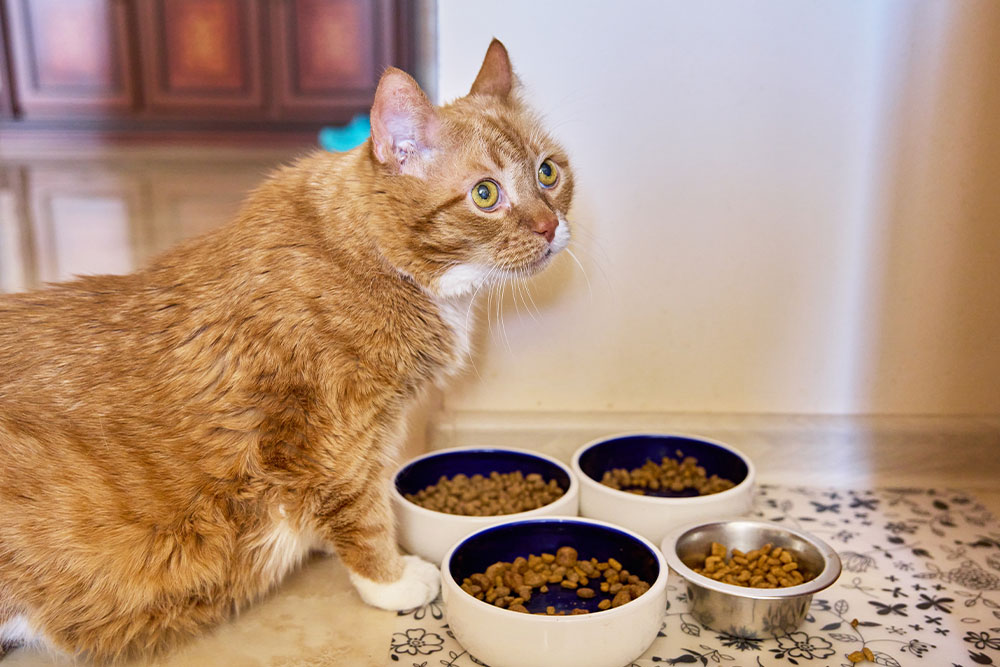Understanding Appetite Loss in Pets: A Comprehensive Guide for Pet Owners in Reno, Nevada
When your pet turns away from their food bowl, it’s easy to feel concern. Understanding the nuances of appetite loss can help you distinguish between a minor hiccup in your pet’s eating habits and a potential health crisis. This guide aims to equip pet owners in Reno, Nevada, with the knowledge needed to navigate these troubling waters with confidence and care.
What is Appetite Loss in Pets?
Definition and Overview
Appetite loss, or anorexia in pets, can range from a temporary disinterest in food due to factors like mood changes or weather to significant health concerns requiring urgent attention. Monitoring how much and how often your pet eats is crucial in maintaining their health. It’s important to note that appetite loss can also be a symptom of underlying diseases such as kidney disease, liver disease, or diabetes, which require timely diagnosis and intervention.
Common Causes of Appetite Loss
Several factors can lead to your pet not eating properly, including:
- Illnesses: Like humans, pets might not eat well if they’re not feeling well. Conditions like dental disease can make eating painful, leading to decreased food intake.
- Stress: Changes in their environment or routine can upset pets. For example, a recent move or the introduction of a new pet can disrupt their sense of safety.
- Dietary Dislikes or Digestive Issues: Disliking a new food or having trouble digesting it can affect appetite. Food allergies or intolerances can also play a role in appetite loss.
Recognizing the difference and responding appropriately ensures your pet’s health remains a priority.
Recognizing the Signs of Serious Appetite Issues
Subtle Signs Not to Ignore
Look for less obvious signs that something is amiss:
- Decreased food intake over several days
- Changes in water consumption, which might indicate conditions like diabetes or kidney issues
- Increased lethargy or less interest in usual activities, possibly signaling more serious internal problems
Symptoms That Require Immediate Attention
Certain symptoms suggest the need for urgent care:
- Rapid weight loss, which can lead to muscle wasting and weakened immunity
- Vomiting or diarrhea, which can quickly lead to dehydration and require immediate fluid therapy
- Whining or other signs of discomfort, potentially indicating pain or gastrointestinal distress
If you notice these symptoms, it’s important to act quickly to support your pet’s health. Contact us right away and we will help you determine the best next steps for your pet.
How to Respond to Your Pet’s Appetite Loss
Initial Steps at Home
Consider these simple solutions before consulting a veterinarian:
- Offer a variety of foods to spark interest, including wet food, which can be more appealing and easier to eat.
- Ensure their feeding area is quiet and stress-free to encourage a calm eating environment.
- Keep a consistent feeding schedule to maintain routine and reduce stress.
These steps can help manage minor appetite fluctuations at home. However, persistent issues should not be ignored.
When to Consult a Veterinarian
If your pet’s appetite doesn’t improve after 24-48 hours or if you observe any distressing symptoms, consult your veterinarian. Early intervention can prevent more serious complications.
Diagnostic Approaches and Treatment Options at Peak Pet Urgent Care
Common Diagnostic Tests
To identify the root of the problem, your veterinarian may recommend:
- Blood tests to check for underlying conditions like infections, organ dysfunction, or anemia
- X-rays to visualize any obstructions or abnormalities that might be causing discomfort and loss of appetite
- A thorough physical examination to detect any pain, swelling, or other abnormalities
Treatment Possibilities
Depending on the diagnosis, treatment might include:
- Dietary changes to accommodate allergies or digestive sensitivities
- Prescription medications for conditions such as infections, inflammation, or pain management
- Specific therapeutic interventions, such as fluid therapy for dehydration or surgery for obstructions
Preventing Future Appetite Issues in Pets
Best Practices in Pet Nutrition and Care
Regular check-ups and a balanced diet are foundational to preventing health issues. Additionally, consider:
- Regular parasite control to prevent infections that can affect appetite
- Keeping up with vaccinations to protect against diseases that can cause appetite loss
- Monitoring your pet’s weight and activity levels to catch any changes early
Environmental and Emotional Well-being
A stable and nurturing environment contributes significantly to your pet’s health. Ensure they have:
- A calm place to eat and sleep, free from stress and disturbances
- Regular, engaging exercise to maintain physical health and reduce stress
- A routine that they can rely on, which can help mitigate anxiety-related appetite issues
Additional FAQs and Blogs
For more information and ongoing support, explore our FAQs and Blog.
- Dog Not Eating: Solutions and Advice – Preventive Vet
- Changing Dog Food Guide – Purina
- 2023 AAHA Senior Care Guidelines for Dogs and Cats – AAHA
Schedule a Visit or Consultation
When you’re ready to schedule your appointment, visit our Request Appointment page. We’re here to provide personalized care and support for your pet’s needs, ensuring they return to health as quickly as possible.

FAQs: Appetite Loss in Pets
What should I do if my pet refuses to eat?
Begin by offering different types of food to see if they have a preference. If they still refuse to eat after 24-48 hours, consult your veterinarian.
Can stress really cause appetite loss in pets?
Yes, stress is a significant factor in appetite loss, as changes in environment or routine can lead to anxiety, impacting their eating habits.
How can I tell if the issue is serious?
Look for accompanying symptoms like vomiting, diarrhea, lethargy, or rapid weight loss. These may indicate a more serious underlying health issue that requires immediate veterinary attention.






Leave A Comment